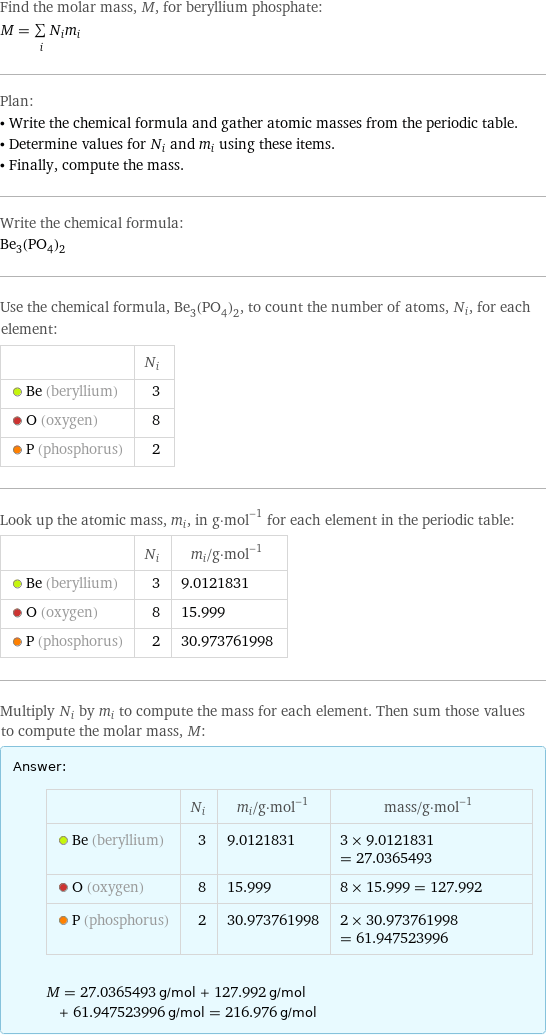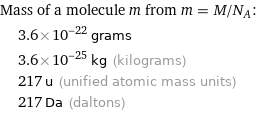Input interpretation

beryllium phosphate | molar mass
Result

Find the molar mass, M, for beryllium phosphate: M = sum _iN_im_i Plan: • Write the chemical formula and gather atomic masses from the periodic table. • Determine values for N_i and m_i using these items. • Finally, compute the mass. Write the chemical formula: Be_3(PO_4)_2 Use the chemical formula, Be_3(PO_4)_2, to count the number of atoms, N_i, for each element: | N_i Be (beryllium) | 3 O (oxygen) | 8 P (phosphorus) | 2 Look up the atomic mass, m_i, in g·mol^(-1) for each element in the periodic table: | N_i | m_i/g·mol^(-1) Be (beryllium) | 3 | 9.0121831 O (oxygen) | 8 | 15.999 P (phosphorus) | 2 | 30.973761998 Multiply N_i by m_i to compute the mass for each element. Then sum those values to compute the molar mass, M: Answer: | | | N_i | m_i/g·mol^(-1) | mass/g·mol^(-1) Be (beryllium) | 3 | 9.0121831 | 3 × 9.0121831 = 27.0365493 O (oxygen) | 8 | 15.999 | 8 × 15.999 = 127.992 P (phosphorus) | 2 | 30.973761998 | 2 × 30.973761998 = 61.947523996 M = 27.0365493 g/mol + 127.992 g/mol + 61.947523996 g/mol = 216.976 g/mol
Unit conversion

0.21698 kg/mol (kilograms per mole)
Comparisons

≈ 0.3 × molar mass of fullerene ( ≈ 721 g/mol )

≈ 1.1 × molar mass of caffeine ( ≈ 194 g/mol )

≈ 3.7 × molar mass of sodium chloride ( ≈ 58 g/mol )
Corresponding quantities

Mass of a molecule m from m = M/N_A: | 3.6×10^-22 grams | 3.6×10^-25 kg (kilograms) | 217 u (unified atomic mass units) | 217 Da (daltons)

Relative molecular mass M_r from M_r = M_u/M: | 217